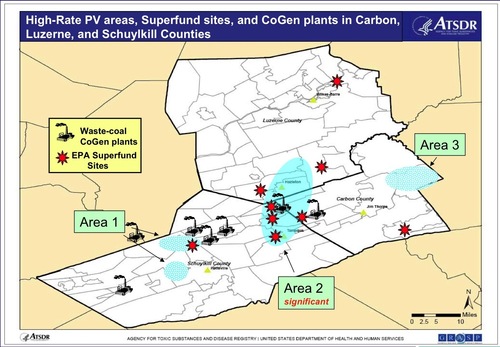POWER POLITICS: West Virginia redefines dirty energy as "alternative"
 When you hear the phrase "alternative energy," what comes to mind?
When you hear the phrase "alternative energy," what comes to mind?Solar power? Wind? Hydroelectric?
Not for West Virginia's political leaders. They think a little differently.
In the recent legislative session, Gov. Joe Manchin (D) (in photo at right) championed and state lawmakers approved an energy portfolio standard bill requiring 25% of generation to come from "alternative and renewable" sources by 2025. But the new standard, which goes into effect this month, has defined "alternative" to include natural gas, old tires, coal gas and even waste coal -- energy sources that emit significant quantities of climate-warming greenhouse gases as well as toxic, health-damaging pollutants.
"It's Governor Humpty Dumpty occupying that nice mansion beside the Kanawha River (where he can admire the endless coal barges)," West Virginia Sierra Club Chair Jim Sconyers wrote about the new law. "After all, it was Humpty Dumpty who said, 'When I use a word, it means just what I choose it to mean -- neither more nor less.'"
SB 297 sets up a system of tradable credits for electricity produced by alternative and renewable sources. While it offers credits for traditional renewable sources including solar, wind, hydropower and geothermal, it also gives credits for what it calls "alternative" sources -- defining those as:
* advanced coal technology, a method of capturing emissions from burning coal that's still unproven on a large scale;
* coal bed methane, or natural gas extracted from coal beds, an energy source that has a serious impact on groundwater supplies;
* fuel produced by coal gasification or liquefaction, which emits toxic pollutants as well as greenhouse gases;
* synthetic gas made from coal, another hydrocarbon-intensive and polluting fuel;
* integrated gasification combined cycle technologies, which reduce but do not eliminate the emissions typically associated with coal plants;
* waste coal, the burning of which produces large amounts of greenhouse gases as well as toxic emissions;
* tire-derived fuel, another polluting, toxic fuel source;
* pumped storage hydroelectric projects, which are actually net consumers of energy;
* natural gas, the burning of which produces greenhouse gases and other pollution; and
* nuclear power, which releases radioactive pollution to the environment and also produces dangerous waste products.
The West Virginia Environmental Council head lobbyist Donald S. Garvin Jr. blasted the new standard in an op-ed:
No other state includes natural gas as a source of "alternative" energy. Nuclear energy is included by only a few, and they specify "advanced generation" nuclear facilities. Most states that include "clean coal" specifically limit it to facilities that include carbon capture and sequestration, or require that they lead to a reduction in greenhouse gas emissions. Some jurisdictions specifically exclude "pump-storage" hydropower facilities.By listing all of these heavily polluting sources as "alternative," Garvin said, the standard undermines the original goal of reducing carbon emissions while creating a system that puts West Virginia "completely out of step" with the rest of the nation.
He also pointed out that by including natural gas and nuclear, the new law may enable West Virginia's utilities to meet the standard without building any renewable energy facilities at all. That because there's no requirement that the electricity provided actually be produced in West Virginia. And American Electric Power -- the Ohio-based utility that serves the state through its Appalachian Power unit -- already has enough nuclear and natural gas generation to meet the requirement through 2025.
A toxic standard for environmental health
The new law gives West Virginia the dubious distinction of being the first state to include tire burning in its alternative/renewable portfolio, observes Mike Ewall of the Energy Justice Network. While that helps dispose of the 290 million or so tires discarded in the U.S. every year, burning tires also release toxic chemicals including cancer-causing lead, benzene, polycyclic aromatic hydrocarbons and dioxin.
The new standard also makes West Virginia the only other state besides Pennsylvania to include in its energy portfolio standard waste coal -- mining refuse originally cast aside during processing as too low-quality but which can now be burned thanks to the development of fluidized bed combustion technology.
As with burning tires, this provision helps disappear a big waste problem -- but the experience of the Pennsylvania communities with the nation's heaviest concentration of FBC waste coal burning power plants raises serious questions about waste coal's potential environmental health impact.
Last week, representatives of the federal Agency for Toxic Substances and Disease Registry held a public meeting in eastern Pennsylvania to discuss a planned $5.5 million research project into what may be causing a confirmed cluster of the rare blood cancer polycythemia vera in the coal mining communities of Schuylkill, Luzerne and Carbon counties. The area where the cancer was found to be occurring at an unusually high rate is home to toxic hotspots including numerous waste-coal burning plants, with five such facilities in Schuylkill County alone and three others just across its border in Northumberland, Carbon and Luzerne counties.
This map prepared by ATSDR shows the location of the cancer clusters (blue ovals) in relation to the waste-coal-burning plants. The map excludes the waste-coal burning power plant that's in Luzerne County because it uses waste coal as a secondary fuel; that facility is located north and slightly west of the large cluster.
 Plants using FBC technology operate at lower temperatures and oxygen levels than conventional coal-fired power plants and inject limestone during combustion to reduce sulfur oxide pollution. But lower temperatures and oxygen levels, low-quality fuels and limestone injection have all been found to contribute to increased emissions of polycyclic aromatic hydrocarbons (PAHs) -- toxic compounds known to cause genetic mutations and cancer. In fact, the specific genetic mutation involved in polycythemia vera has been linked to PAH exposure. And because radioactive elements are found in waste coal, FBC plants emit radioactive pollution, which has also been linked to an excess risk of polycythemia vera.
Plants using FBC technology operate at lower temperatures and oxygen levels than conventional coal-fired power plants and inject limestone during combustion to reduce sulfur oxide pollution. But lower temperatures and oxygen levels, low-quality fuels and limestone injection have all been found to contribute to increased emissions of polycyclic aromatic hydrocarbons (PAHs) -- toxic compounds known to cause genetic mutations and cancer. In fact, the specific genetic mutation involved in polycythemia vera has been linked to PAH exposure. And because radioactive elements are found in waste coal, FBC plants emit radioactive pollution, which has also been linked to an excess risk of polycythemia vera.Today there are 18 FBC plants nationwide using waste coal as a primary fuel, according to the Energy Justice Network -- 14 in Pennsylvania, three in West Virginia and one in Utah. There are another 13 plants using waste coal as a secondary fuel -- four in Virginia, three each in Alabama and South Carolina, two in Pennsylvania and one in Mississippi.
The three existing waste coal burners in West Virginia include Dominion's North Branch plant in Grant County; the company's Morgantown Energy Facility in Monongalia County, which provides power to West Virginia University as well as other customers; and Edison International's Grant Town plant in Marion County, which also burns tires.
Looking at these three plants' emissions, it is clear that "alternative" does not mean non-polluting. Together these facilities released more than 89,000 pounds of toxic chemicals into the air alone in 2007, according to the U.S. Environmental Protection Agency's Toxics Release Inventory. That includes more than 38,000 pounds of hydrochloric acid, 11,000 pounds of sulfuric acid, more than 9,000 pounds of hydrogen fluoride, 183 pounds of mercury and 57 pounds of lead. The TRI does not include PAHs or radioactive emissions.
Three new waste coal burning plants have been proposed for West Virginia, according to the Energy Justice Network, and a big waste coal plant -- the nation's largest, in fact -- is slated for Wise County in southwestern Virginia, just three counties south of the West Virginia line. A coalition of environmental groups represented by the Southern Environmental Law Center is challenging the Wise County plant's air permits in court, with the trial scheduled to start July 31.
At the same time West Virginia is promoting dirty power through its energy standard, new evidence is emerging about the serious environmental health problems already afflicting residents of Appalachia's coalfields. A study released last month by West Virginia University Professor Michael Hendryx documented higher mortality rates in Appalachian coal counties, which it blamed in part on environmental pollution.
Unfortunately, rather than easing the problems associated with environmental pollution and poor environmental health, West Virginia's new energy standard ensure they will continue -- a big missed opportunity for the state to build a greener, cleaner future.
Tags
Sue Sturgis
Sue is the former editorial director of Facing South and the Institute for Southern Studies.
